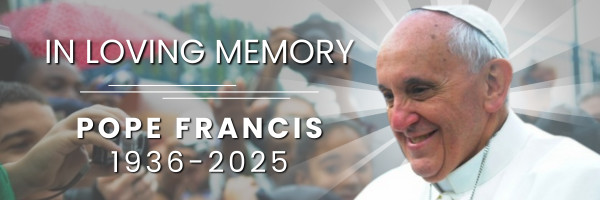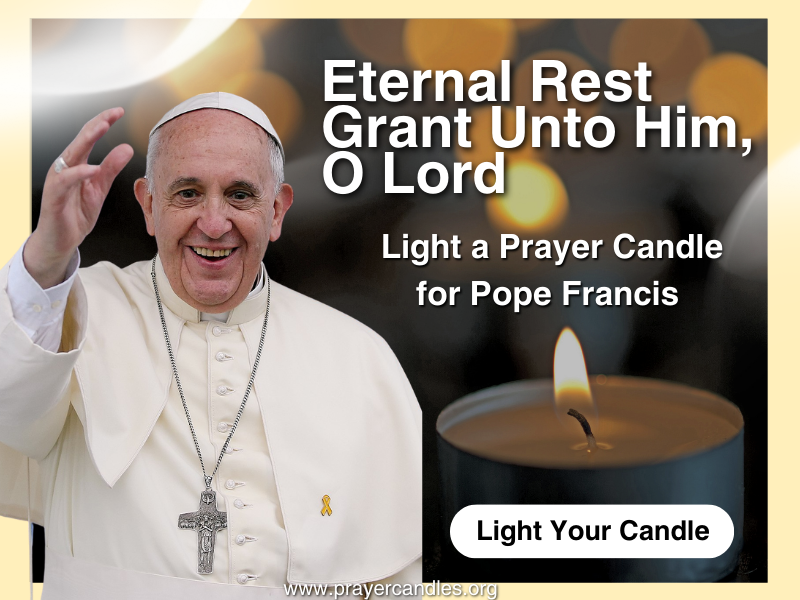We ask you, urgently: don't scroll past this
Dear readers, Catholic Online was de-platformed by Shopify for our pro-life beliefs. They shut down our Catholic Online, Catholic Online School, Prayer Candles, and Catholic Online Learning Resources essential faith tools serving over 1.4 million students and millions of families worldwide. Our founders, now in their 70's, just gave their entire life savings to protect this mission. But fewer than 2% of readers donate. If everyone gave just $5, the cost of a coffee, we could rebuild stronger and keep Catholic education free for all. Stand with us in faith. Thank you.Help Now >
Feast: Our Lady of the Rosary
FREE Catholic Classes
'Do whatever he tells you' (see Jn 2:1-5). Those were the final words of Our Lady recorded in the New Testament.
Highlights
Catholic Online (https://www.catholic.org)
10/7/2009 (1 decade ago)
Published in Living Faith
GLADE PARK, Colorado (Catholic Online) - The feast dedicated to "Our Lady of the Rosary" was instituted by Pope Pius V. It was to commemorate the anniversary of the defeat of the Turkish fleet at the battle of Lepanto on the first Sunday in October 1571. This miraculous defeat broke the back of Muslim domination of the Mediterranean and was attributed to the prayers and processions of the Rosary confraternity in Rome. The Feast was later moved to the fixed date of October 7. In fact, the entire month of October is dedicated to encouraging the praying of the Rosary and reflecting on the mysteries of the Christian faith which it memorializes.
In a few days, we will recall a miraculous event. On October 13, 1917, seventy-thousand pilgrims had found their way to Fatima as a result of the visions three children had begun receiving in the spring of 1916. The anxious crowd, bearing mixed attitudes, uncomfortably stood in ankle-deep mud; many awaited an unheard yet fathomed hope, a silent promise which had touched their craving hearts; others had arrived convinced that their lack of faith would soon be justified on finding the wet, soggy morning uneventful. This latter group would soon adopt a very different outlook on life.
Just prior to noon of that same day, the Lady "more brilliant than the sun" appeared to the three children, saying, "I am the Lady of the Rosary. I have come to warn the faithful to amend their lives and to ask pardon for their sins. They must not offend our Lord any more, for he is already too grievously offended by the sins of men. People must say the Rosary. Let them continue saying it every day."
Nearly nineteen centuries earlier, our Lord Jesus Christ sat at a wedding feast in Cana. The wine had run out, and, showing her constant concern for all, Our Lady simply turned to her Son and said, "They have no wine." Although Jesus responded, "My hour is not yet come," the Mother of our Lord, of course, knew her Son would listen to her, and, in a display of complete confidence, simply advised the servants to "Do whatever he tells you" (see Jn 2:1-5). Those were the final words of Our Lady recorded in the New Testament, which, unarguably, are an everlasting profession of what it means to be Christian.
Yet even before that day on which our Lord worked his fist miracle, the birth of the Rosary had, in a sense, already occurred in the Angelic Salutation, when Gabriel the Archangel said to Mary: "Hail, favored one! The Lord is with you" (Lk 1:28). St. Gabriel, sensing that Mary was troubled by his message, tells her she has "found favor with God" (1:30). And, upon hearing of the wondrous, unfathomable event of which she was about to partake, the sweet Virgin responded with beautiful simplicity and obedience: "Behold, I am the handmaid of the Lord, may it be done to me according to your word" (1:38).
The Handmaid of the Lord, the Virgin Mother of all the faithful, whose entire life is united in perfection and holiness to the Incarnate Word's mission of Salvation, returns again and again to us, exercising her office as motherly intercessor, caring for her children, directing them always and everywhere to her Son. She says of herself: "I am the Lady of the Rosary."
The word Rosary means "crown of roses." St. Louis De Montfort calls the Rosary "the mystical rose tree of Jesus and Mary in life, death, and eternity." He tells us that reciting the Rosary produces spiritual roses which will "never wilt or die, and they will be just as exquisite thousands of years from now as they are today." In regards the worth of saying the Rosary, he professes it to be a "priceless treasure which is inspired by God" (The Secret Of The Rosary, Montfort Publications, 1954).
Pope John Paul II tells us: "The Rosary, though clearly Marian in character, is at the heart a Christocentric prayer. In the sobriety of its elements, it has all the depth of the Gospel message in its entirety, of which it can be said to be a compendium. . . . Through the Rosary the faithful receive abundant grace, as though from the very hands of the Mother of the Redeemer" (Apostolic Letter On The Most Holy Rosary, Rosarium Virginis Mariae, introduction).
Our Lady of the Rosary is the image and beginning of the Church: "In the meantime the Mother of Jesus, in the glory which she possesses in body and soul in heaven, is the image and beginning of the Church as it is to be perfected in the world to come. Likewise she shines forth on earth, until the day of the Lord shall come, a sign of certain hope and comfort to the pilgrim People of God" (LG 68; cf. 2 Pet 3:10).
Soon we will return again to that day at Fatima less than a century ago, on which Our Lady of the Rosary opened her hands: the rain ceased, clouds parted, light issued forth from her delicate palms and traveled toward the sun as if penetrating the daystar itself, transforming it into a pale disc that could be viewed without harming the eyes. Although the gathered crowd could not see Our Lady, on hearing Lucy shout, "Look at the Sun!" thousands of eyes turned their gaze toward what was a very different sun from anything they had previously known.
United in a bond of love and beauty, Our Lady of the Rosary and the Blessed Trinity reached down upon sinful humanity, leaving those present as well as future generations yet another sign of heaven's constant plea of repentance. On that very day the dancing sun would forever be burned into the intellects of the seventy-thousand onlookers. Those who doubted, doubted no longer; those who believed shook with joy; the children's eyes filled with tears of wonder and love as they, along with all who were present, witnessed the Miracle of the Sun.
Yet in light of all Our Lady has done, in view of all the miracles attributed to her intercession, those of Fatima, Lourdes and Guadalupe and countless others, there are still those numerous, clashing voices of dissent: there are those who are misguidedly ashamed in seeking the help of the Virgin; those who commit grave error in thinking little of the Mother of our Lord, ignoring the teaching of the Catholic Church and the many references to her in Scripture, as if she is but some unimportant figure in the reality of Salvation whose position as Mother of the faithful ought to be ignored; there are those who neglect the Rosary; there are those who purposefully ignore the Rosary; there are even those who despise the Rosary.
St. Louis De Montfort has something to say of such an unfortunate situation: "Even though God has set his seal of approval on the holy Rosary by many miracles, and in spite of the Papal Bulls that have been written approving it, there are only too many people who are against the holy Rosary today. These "freethinkers" and those who scorn religion either condemn the Rosary or they turn others away from it. . . . It is easy to see they have absorbed the poison of hell and that they are inspired by the devil - for nobody can condemn devotion to the holy Rosary without condemning all that is most holy in the Catholic Faith, such as the Lord's Prayer, the Angelic Salutation and the mysteries of the life, death and glory of Jesus Christ and of his holy Mother" (Ibid.).
There were "freethinkers" then as there are now; freethinking their way into the slavery of sin; making of themselves enemies of the Mother of God; forsaking the truly beautiful.
Pope Leo XIII proposed, on September 1, 1883, in his encyclical "Supremi Apostolatus Officio," that the Rosary is an effective spiritual weapon against the evils of an ill society. Rightly noting that there have been many "exceedingly great favors obtained" through the ages by the Christian peoples' devotion to the Rosary, he tells us: "We desire that that same devotion [to the Rosary] should be offered by the whole Catholic world with the greatest earnestness to the Blessed Virgin, that by her intercession her Divine Son may be appeased and softened in the evils which afflict us" (SAO, introduction).
The diamond-hard weapon with which to combat our greatest evils - specifically the barbaric practices of legalized abortion, an "intolerable moral corruption" in which the intentional killing of our youngest children is engaged in a manner of blatant, deplorable openness, as if ending the life of the innocent is an entirely innocuous choice which people are "free" to make - is found in devoutly praying the Rosary. It is necessary that, in order to realize abortion's defeat, the Catholic faithful, the universal Church founded by our Lord Jesus Christ, return all the more to the Rosary.
Pope Leo XIII continues: "It has always been the habit of Catholics in danger and in troublous times to fly for refuge to Mary, and to seek for peace in her maternal goodness; . . . [the Immaculate Virgin] has a favor and power with her Son greater than any human or angelic creature has ever obtained, or ever can gain. And, as it is her greatest pleasure to grant her help and comfort to those who seek her, it cannot be doubted that she would deign, and even be anxious, to receive the aspirations of the universal Church (Ibid., 2).
"This devotion, so great and so confident, to the august Queen of Heaven, has never shone forth with such brilliancy as when the militant Church of God has seemed to be endangered by the violence of heresy spread abroad, or by an intolerable moral corruption, . . . " (Ibid., 3).
It is certain that devotion to the Rosary, a powerful weapon which efficaciously destroys vice, evil and sin, is the answer to the "intolerable moral corruption" so prevalent in our secularist society.
Further, to be truly Christian is to worship as Christians ought; in the fullness of truth as whole and complete Christians. Therefore Catholics in communion with the Church necessarily include veneration to the Mother of God in their life as Christians:
Pope Paul VI, in his Apostolic Exhortation, "Marialis Cultus" (1974), reminds us devotion to the Virgin Mary is an integral aspect of Christian worship: "This devotion [to the Blessed Virgin Mary] fits--as we have indicated above--into the only worship that is rightly called "Christian," because it takes its origin and effectiveness from Christ, finds its complete expression in Christ, and leads through Christ in the Spirit to the Father. . . . And the increased knowledge of Mary's mission has become joyful veneration of her and adoring respect for the wise plan of God, who has placed within His family (the Church), as in every home, the figure of a Woman, who in a hidden manner and in a spirit of service watches over that family 'and carefully looks after it until the glorious day of the Lord'" (MC, introduction).
On December 10, 1925, Our Lady with the Christ Child appeared to Lucia, who at this time was a nun at the Dorothean convent in Pontevedra, Spain. She was eighteen years old. The Christ Child first spoke, saying: "Have compassion on the heart of your Most Holy Mother, covered with thorns, with which ungrateful men pierce it at every moment, and there is no one to make an act of reparation to remove them."
Lucy's thoughts certainly must have cast back upon that day at Fatima, when soggy ground suddenly turned dry, when wet clothes instantly became once more warm, when the Miracle of the Sun was forever recorded in history, when the Lady "more brilliant than the sun" announced to the entire world:
"I am the Lady of the Rosary. I have come to warn the faithful to amend their lives and to ask pardon for their sins. They must not offend our Lord any more, for he is already too grievously offended by the sins of men. People must say the Rosary. Let them continue saying it every day."
-----
F. K. Bartels operates catholicpathways.com, and may be reached via email: bartels@catholicpathways.com. He is a contributing writer for Catholic Online.
---
'Help Give every Student and Teacher FREE resources for a world-class Moral Catholic Education'
Copyright 2021 - Distributed by Catholic Online
Join the Movement
When you sign up below, you don't just join an email list - you're joining an entire movement for Free world class Catholic education.

Novena for Pope Francis | FREE PDF Download
-

- Easter / Lent
- Ascension Day
- 7 Morning Prayers
- Mysteries of the Rosary
- Litany of the Bl. Virgin Mary
- Popular Saints
- Popular Prayers
- Female Saints
- Saint Feast Days by Month
- Stations of the Cross
- St. Francis of Assisi
- St. Michael the Archangel
- The Apostles' Creed
- Unfailing Prayer to St. Anthony
- Pray the Rosary
Cardinals Request Prayers from Faithful Ahead of Historic May 7 Conclave
How a New Pope Is Elected
Toy Shortages Threaten Christmas Traditions as Trade War Impacts Retailers
Daily Catholic
 Daily Readings for Thursday, May 01, 2025
Daily Readings for Thursday, May 01, 2025 St. Marculf: Saint of the Day for Thursday, May 01, 2025
St. Marculf: Saint of the Day for Thursday, May 01, 2025 To Saint Peregrine: Prayer of the Day for Thursday, May 01, 2025
To Saint Peregrine: Prayer of the Day for Thursday, May 01, 2025 Daily Readings for Wednesday, April 30, 2025
Daily Readings for Wednesday, April 30, 2025 St. Pius V, Pope: Saint of the Day for Wednesday, April 30, 2025
St. Pius V, Pope: Saint of the Day for Wednesday, April 30, 2025- Prayer to Saint Joseph for Success in Work: Prayer of the Day for Wednesday, April 30, 2025
![]()
Copyright 2025 Catholic Online. All materials contained on this site, whether written, audible or visual are the exclusive property of Catholic Online and are protected under U.S. and International copyright laws, © Copyright 2025 Catholic Online. Any unauthorized use, without prior written consent of Catholic Online is strictly forbidden and prohibited.
Catholic Online is a Project of Your Catholic Voice Foundation, a Not-for-Profit Corporation. Your Catholic Voice Foundation has been granted a recognition of tax exemption under Section 501(c)(3) of the Internal Revenue Code. Federal Tax Identification Number: 81-0596847. Your gift is tax-deductible as allowed by law.





 Daily Readings for Thursday, May 01, 2025
Daily Readings for Thursday, May 01, 2025 St. Marculf: Saint of the Day for Thursday, May 01, 2025
St. Marculf: Saint of the Day for Thursday, May 01, 2025 To Saint Peregrine: Prayer of the Day for Thursday, May 01, 2025
To Saint Peregrine: Prayer of the Day for Thursday, May 01, 2025 St. Pius V, Pope: Saint of the Day for Wednesday, April 30, 2025
St. Pius V, Pope: Saint of the Day for Wednesday, April 30, 2025

